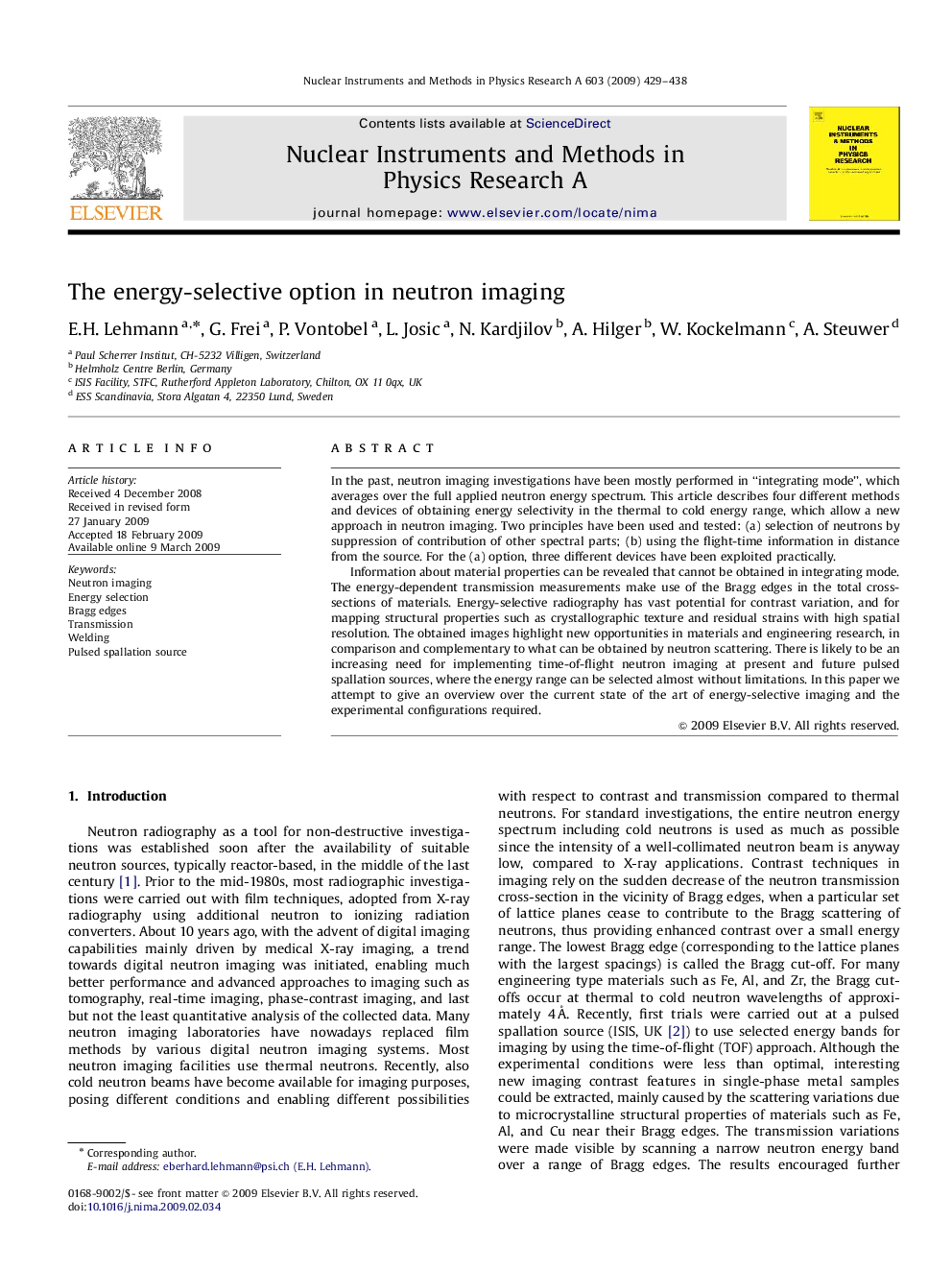| Article ID | Journal | Published Year | Pages | File Type |
|---|---|---|---|---|
| 1828759 | Nuclear Instruments and Methods in Physics Research Section A: Accelerators, Spectrometers, Detectors and Associated Equipment | 2009 | 10 Pages |
In the past, neutron imaging investigations have been mostly performed in “integrating mode”, which averages over the full applied neutron energy spectrum. This article describes four different methods and devices of obtaining energy selectivity in the thermal to cold energy range, which allow a new approach in neutron imaging. Two principles have been used and tested: (a) selection of neutrons by suppression of contribution of other spectral parts; (b) using the flight-time information in distance from the source. For the (a) option, three different devices have been exploited practically.Information about material properties can be revealed that cannot be obtained in integrating mode. The energy-dependent transmission measurements make use of the Bragg edges in the total cross-sections of materials. Energy-selective radiography has vast potential for contrast variation, and for mapping structural properties such as crystallographic texture and residual strains with high spatial resolution. The obtained images highlight new opportunities in materials and engineering research, in comparison and complementary to what can be obtained by neutron scattering. There is likely to be an increasing need for implementing time-of-flight neutron imaging at present and future pulsed spallation sources, where the energy range can be selected almost without limitations. In this paper we attempt to give an overview over the current state of the art of energy-selective imaging and the experimental configurations required.
